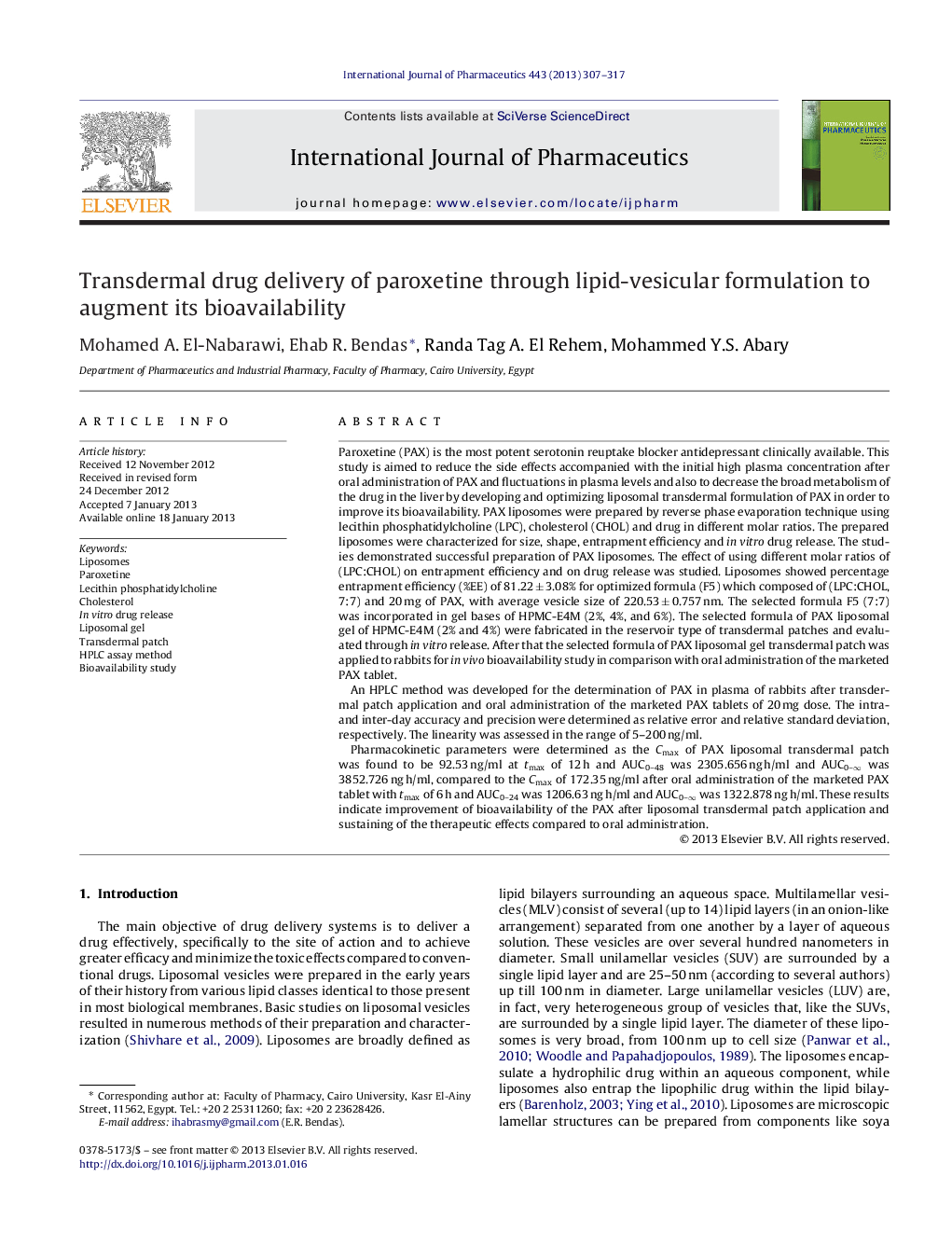| Article ID | Journal | Published Year | Pages | File Type |
|---|---|---|---|---|
| 2502614 | International Journal of Pharmaceutics | 2013 | 11 Pages |
Paroxetine (PAX) is the most potent serotonin reuptake blocker antidepressant clinically available. This study is aimed to reduce the side effects accompanied with the initial high plasma concentration after oral administration of PAX and fluctuations in plasma levels and also to decrease the broad metabolism of the drug in the liver by developing and optimizing liposomal transdermal formulation of PAX in order to improve its bioavailability. PAX liposomes were prepared by reverse phase evaporation technique using lecithin phosphatidylcholine (LPC), cholesterol (CHOL) and drug in different molar ratios. The prepared liposomes were characterized for size, shape, entrapment efficiency and in vitro drug release. The studies demonstrated successful preparation of PAX liposomes. The effect of using different molar ratios of (LPC:CHOL) on entrapment efficiency and on drug release was studied. Liposomes showed percentage entrapment efficiency (%EE) of 81.22 ± 3.08% for optimized formula (F5) which composed of (LPC:CHOL, 7:7) and 20 mg of PAX, with average vesicle size of 220.53 ± 0.757 nm. The selected formula F5 (7:7) was incorporated in gel bases of HPMC-E4M (2%, 4%, and 6%). The selected formula of PAX liposomal gel of HPMC-E4M (2% and 4%) were fabricated in the reservoir type of transdermal patches and evaluated through in vitro release. After that the selected formula of PAX liposomal gel transdermal patch was applied to rabbits for in vivo bioavailability study in comparison with oral administration of the marketed PAX tablet.An HPLC method was developed for the determination of PAX in plasma of rabbits after transdermal patch application and oral administration of the marketed PAX tablets of 20 mg dose. The intra- and inter-day accuracy and precision were determined as relative error and relative standard deviation, respectively. The linearity was assessed in the range of 5–200 ng/ml.Pharmacokinetic parameters were determined as the Cmax of PAX liposomal transdermal patch was found to be 92.53 ng/ml at tmax of 12 h and AUC0–48 was 2305.656 ng h/ml and AUC0–∞ was 3852.726 ng h/ml, compared to the Cmax of 172.35 ng/ml after oral administration of the marketed PAX tablet with tmax of 6 h and AUC0–24 was 1206.63 ng h/ml and AUC0–∞ was 1322.878 ng h/ml. These results indicate improvement of bioavailability of the PAX after liposomal transdermal patch application and sustaining of the therapeutic effects compared to oral administration.
Graphical abstractFigure optionsDownload full-size imageDownload high-quality image (67 K)Download as PowerPoint slide
